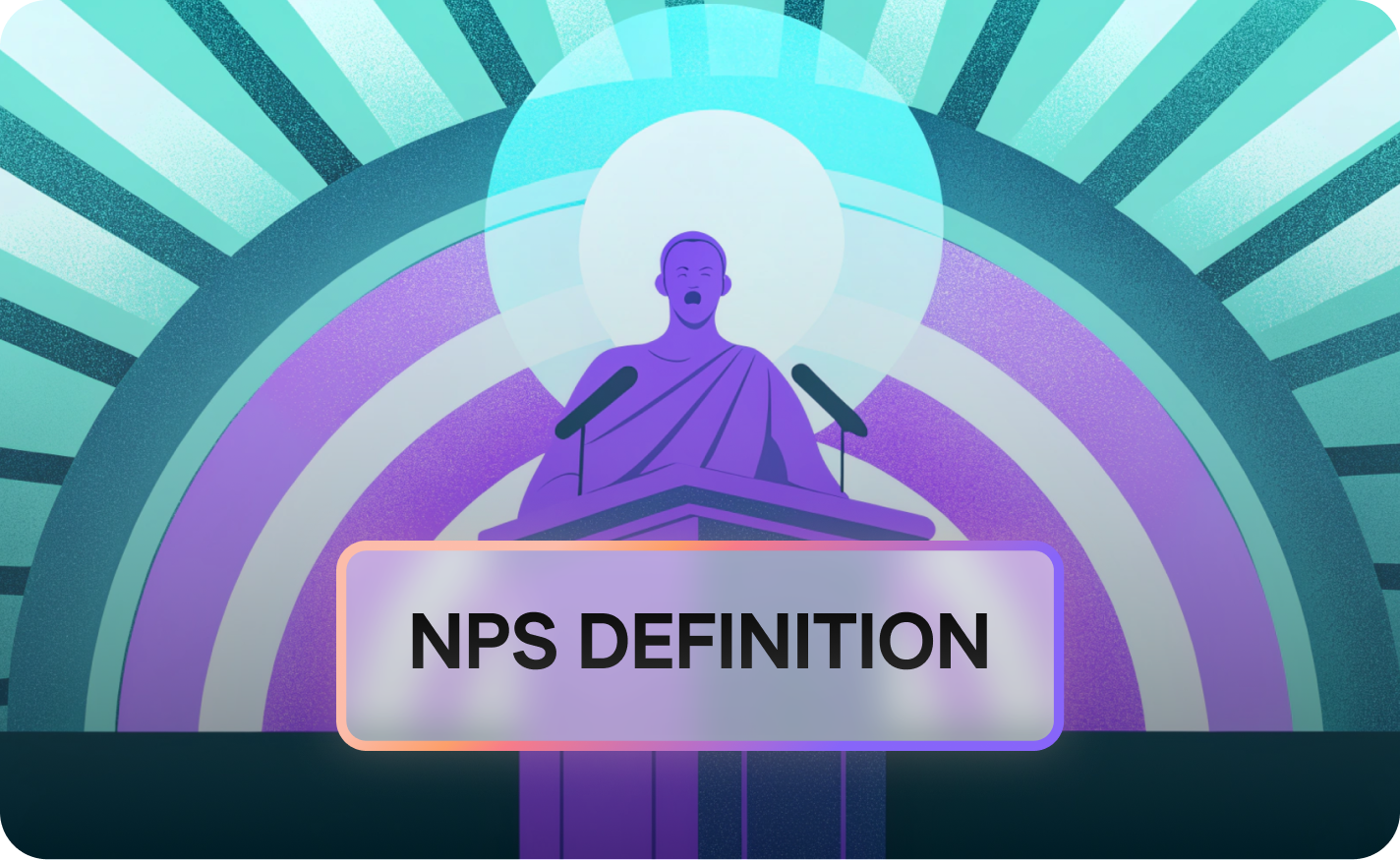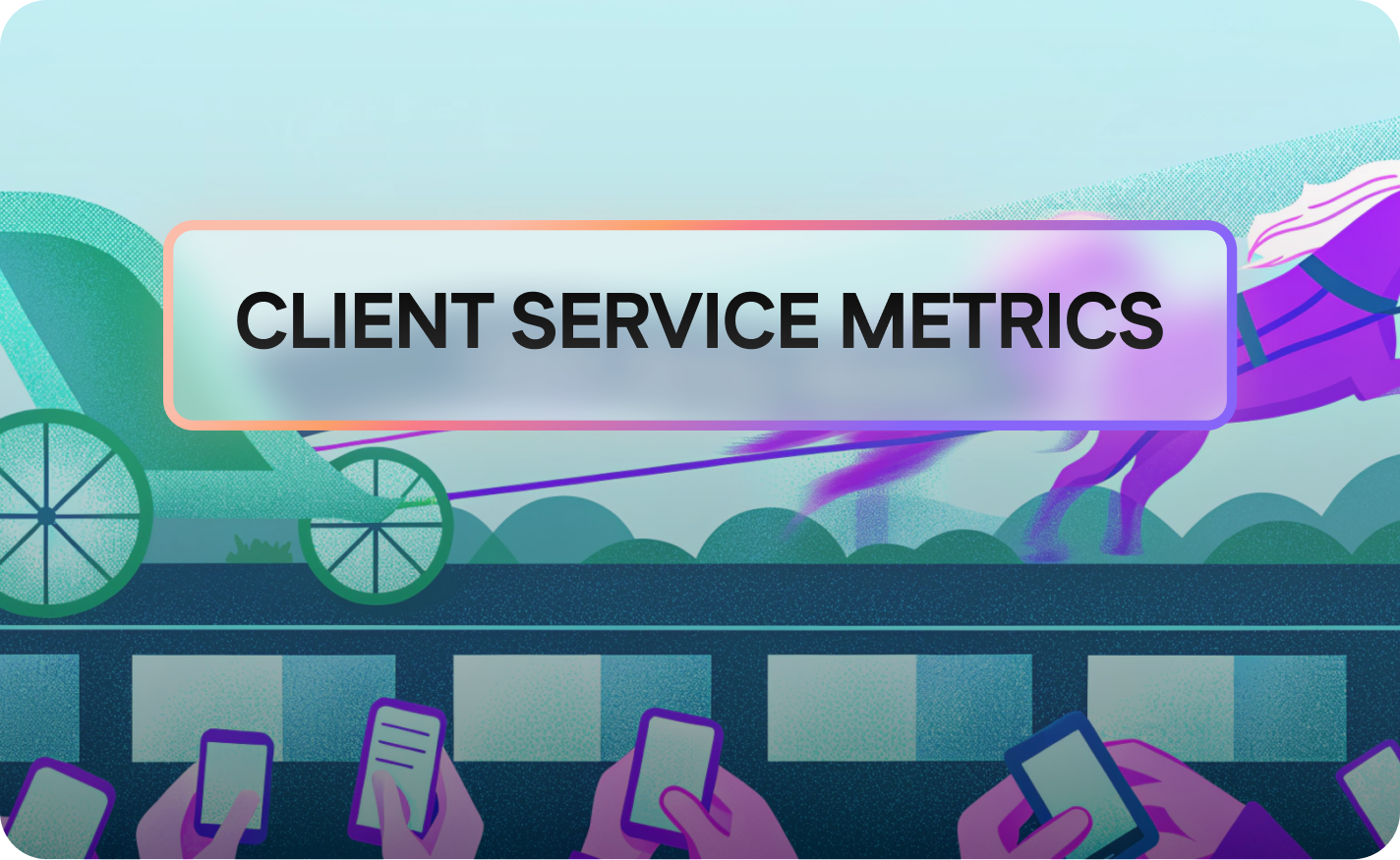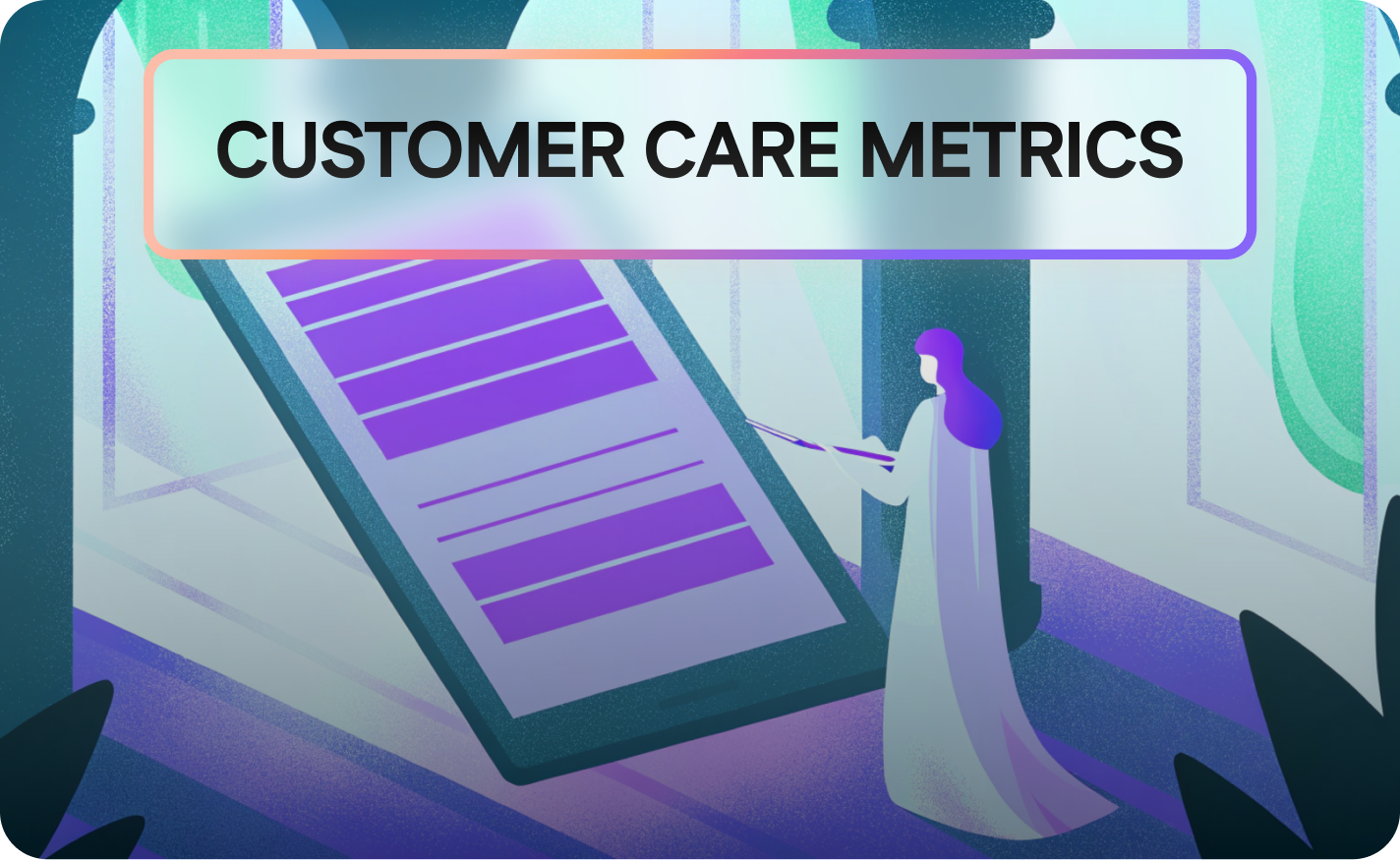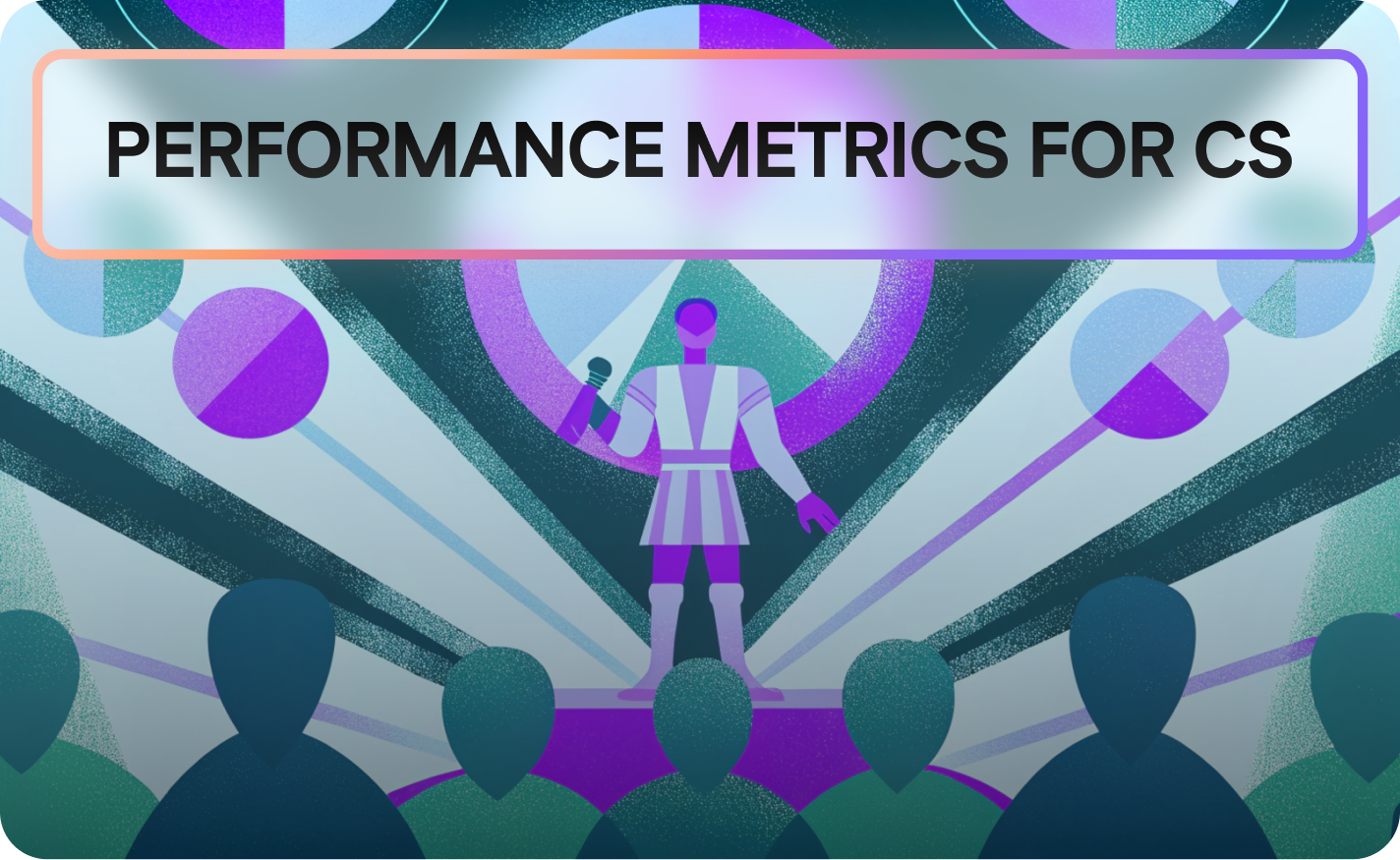Net Promoter Score Definition of NPS: Calculate & Interpret Your Promoter Score

The Net Promoter Score, or NPS, is a powerful metric used to gauge customer loyalty and predict business growth. This article delves into what NPS is, why it matters, and how you can effectively calculate and interpret your own score to drive meaningful improvements in customer experience and overall business performance.
Understanding the Net Promoter Score
What is NPS?
The Net Promoter Score (NPS) is a widely used customer loyalty metric that measures a customer's willingness to recommend a product or service to a friend or colleague. This score measures customer sentiment through a survey question. The calculation of the NPS score then provides a single number.

Importance of NPS as a Metric
Why is NPS data so valuable? The Net Promoter Score (NPS) serves as a leading indicator of customer loyalty, retention, and business growth. Companies that use NPS effectively often see increased revenue and improved customer experience. According to a Bain & Company study, companies with NPS scores above their industry NPS benchmark grow 2.5x faster than their competitors. This highlights the importance of not just achieving a good NPS score, but also striving for a high NPS relative to your industry. Improving your company’s NPS can lead to significant gains in customer satisfaction and overall business success.
Components of the NPS Calculation
To calculate NPS accurately, you must understand its components. The Net Promoter Score (NPS) calculation starts with categorizing NPS survey responses. Here's a breakdown of the categories:
Category: Promoters
Score: 9-10
Description: Enthusiastic and loyal customers.
Category: Detractors
Score: 0-6
Description: Unhappy customers who could damage your brand.
Category: Passives
Score: 7-8
Description: Satisfied but not enthusiastic.
To calculate your NPS, subtract the percentage of detractors from the percentage of promoters. For example, if 50% are promoters and 20% are detractors, your NPS is 30. Remember, a score above 0 indicates that you have more promoters than detractors, but aiming for a good net promoter score would mean understanding your industry NPS benchmark.

Calculating Your NPS
Steps to Calculate NPS
The process to calculate NPS involves several key steps, starting with designing and distributing your NPS survey. Begin by crafting the standard NPS survey question: "On a scale of 0 to 10, how likely are you to recommend our [product or service] to a friend or colleague?". Ensure the survey is distributed to a representative sample of your customer base to gather accurate NPS data. After collecting NPS responses, segment them according to the table below. Then, calculate the percentage of promoters and detractors from your total respondents. Finally, subtract the percentage of detractors from the percentage of promoters to determine your overall NPS. This calculation measures customer loyalty, giving you a clear NPS score for your organization.
Customer Segment: Promoters (Score: 9-10)
Customer Segment: Passives (Score: 7-8)
Customer Segment: Detractors (Score: 0-6)
Interpreting the NPS Score
Once you calculate your Net Promoter Score (NPS), understanding how to interpret the score is critical. The NPS score can range from -100 to +100. A score above 0 indicates that you have more promoters than detractors, which is generally a good NPS sign. However, the definition of a good NPS score varies by industry. A high NPS means a larger proportion of your customers are promoters, suggesting strong customer loyalty and satisfaction. Conversely, a low NPS signals that you have a significant number of detractors, indicating areas where customer experience needs improvement. Use this NPS calculation to pinpoint areas where you need to enhance customer satisfaction and engagement.
Benchmarking Your NPS
To truly understand your Net Promoter Score (NPS), you need to benchmark it against industry standards. What is a good score? The average NPS varies significantly across different sectors. For example, the average NPS in the software industry is around 41, while retail hovers around 35, and financial services average around 30. Comparing your company’s NPS to these benchmarks can provide valuable context. If your NPS score is below your industry's NPS benchmark, it may be time to investigate the customer experience and identify areas for improvement. Use these benchmarks to assess where your customer loyalty stands relative to competitors. Aiming for a good Net Promoter score would mean understanding your industry NPS benchmark.
Conducting Effective NPS Surveys

Designing Your NPS Survey
When designing your NPS survey, it's crucial to keep it simple and focused to maximize response rates. The core of any NPS survey is the standard NPS survey question: "On a scale of 0 to 10, how likely are you to recommend our [product or service] to a friend or colleague?" Frame the question clearly, ensuring respondents understand what they are rating. Keep the survey short and avoid asking unnecessary questions that could dilute the focus on customer loyalty. Ensure the survey is mobile-friendly, as many customers will complete it on their smartphones. A well-designed NPS survey will yield more accurate and actionable NPS data.
Key Survey Questions and Follow-Ups
While the standard NPS survey question is essential, incorporating follow-up questions can provide deeper insights into why customers gave a particular score. For example, after asking the initial NPS question, include an open-ended follow-up question such as, "What is the primary reason for your score?" This allows promoters to articulate what they love, and detractors to express their pain points. Analyzing the responses to these follow-up questions helps you identify specific areas for improvement in customer experience. Remember, the goal is to not only measure customer loyalty but also to understand the drivers behind it, enabling you to improve your NPS effectively.
Collecting and Analyzing NPS Data
After you collect NPS responses, the next step is to analyze the NPS data effectively. Start by segmenting your respondents into promoters, passives, and detractors based on their scores. Use the NPS calculation to determine your overall NPS. Then, delve deeper by analyzing the qualitative feedback from your follow-up questions. Look for recurring themes and patterns to identify the root causes of customer satisfaction and dissatisfaction. This NPS provides you with actionable insights to enhance the customer experience. [NPS helps identify areas for improvement in customer experience.] For instance, a SaaS company increased its NPS from 20 to 45 by addressing user onboarding issues identified through LiveSession session replays, which revealed friction in their signup process.
Using NPS to Drive Business Growth

Identifying Promoters and Detractors
Identifying promoters and detractors from score calculation is crucial for leveraging the Net Promoter Score (NPS) to drive business growth. Promoters, who give a score of 9 or 10 on the NPS survey, are your loyal advocates and can significantly contribute to your business through positive word-of-mouth. Actively engage with these promoters by encouraging them to share their experiences and providing incentives for referrals. On the other hand, detractors, who give a score of 0 to 6, are at risk of damaging your brand. It's essential to address their concerns promptly and effectively to turn them into satisfied customers or, at the very least, mitigate any potential negative impact. Understanding the drivers behind both promoter and detractor sentiment is key to fostering sustainable growth.
Strategies for Improving Your NPS Score
To improve your NPS score effectively, focus on enhancing the customer experience across all touchpoints. What steps can you take? Start by addressing the issues raised by detractors through thorough analysis of NPS survey feedback and LiveSession session replays. Implement changes to resolve these pain points and communicate these improvements to your customers. For passives, identify opportunities to elevate their experience to promoter level by exceeding their expectations. Continuously monitor your NPS benchmark and make data-driven decisions. Regular training for employees can foster a customer-centric culture. Improving your company’s NPS can lead to higher customer loyalty and increased business growth.
Case Studies: Success Stories with NPS
Real-world examples demonstrate the power of NPS in driving business success.
Apple’s retail stores consistently achieve an NPS above 70 by focusing on personalized customer experiences. Zappos achieved an NPS of 80+ by prioritizing customer care metrics.
Apple’s retail stores consistently achieve a high NPS above 70 by focusing on personalized customer experiences and attentive service. This dedication to customer satisfaction has fostered strong customer loyalty and advocacy. Similarly, Zappos achieved an NPS of 80+ by prioritizing customer care and creating a seamless online shopping customer experience. These case studies illustrate how a strong focus on customer loyalty, coupled with effective strategies, can lead to exceptional NPS scores and business outcomes. These companies clearly understand the NPS definition and how to utilize it.
Limitations of NPS

Understanding NPS Constraints
While the Net Promoter Score (NPS) is a valuable metric, it's important to understand its constraints. Why is this important? The NPS is a single data point and shouldn't be the sole indicator of customer experience. It provides a snapshot of customer loyalty but doesn't capture the full complexity of customer relationships. NPS can also be influenced by factors outside of your direct control, such as economic conditions or industry trends. Relying solely on NPS without considering other customer feedback mechanisms can lead to an incomplete understanding of customer satisfaction. Remember, this score measures customer perception at a specific point in time.
Complementing NPS with Other Metrics
NPS is a single metric and should be paired with other customer success metrics (e.g., Customer Satisfaction Score, Customer Effort Score) to avoid oversimplification.
To gain a holistic view of customer satisfaction, it's essential to complement your Net Promoter Score (NPS) with other metrics like Customer Satisfaction Score (CSAT) and the Customer Effort Score (CES). What other metrics are important? The Customer Satisfaction Score (CSAT) measures immediate customer satisfaction with a specific interaction or experience. The Customer Effort Score (CES) gauges the ease with which customers can resolve issues or achieve their goals. Combining these metrics with NPS provides a more comprehensive understanding of customer loyalty and identifies specific areas for improvement. This multi-faceted approach ensures a more accurate assessment of the customer experience.
Balancing NPS Insights with Customer Feedback

Balancing NPS insights with direct customer feedback is essential for making informed decisions and driving meaningful improvements. While the NPS provides a quantitative metric of customer loyalty, qualitative feedback from NPS surveys, customer reviews, and support interactions offers valuable context. Analyze this feedback to understand the reasons behind customer scores and identify specific pain points or areas of delight. Use this combined insight to prioritize improvements and tailor your strategies to meet customer needs effectively. By integrating NPS data with broader customer feedback, you can gain a more complete and actionable understanding of the customer experience, leading to sustainable improvements in customer satisfaction and loyalty.
Related articles
Get Started for Free
Join thousands of product people, building products with a sleek combination of qualitative and quantitative data.



